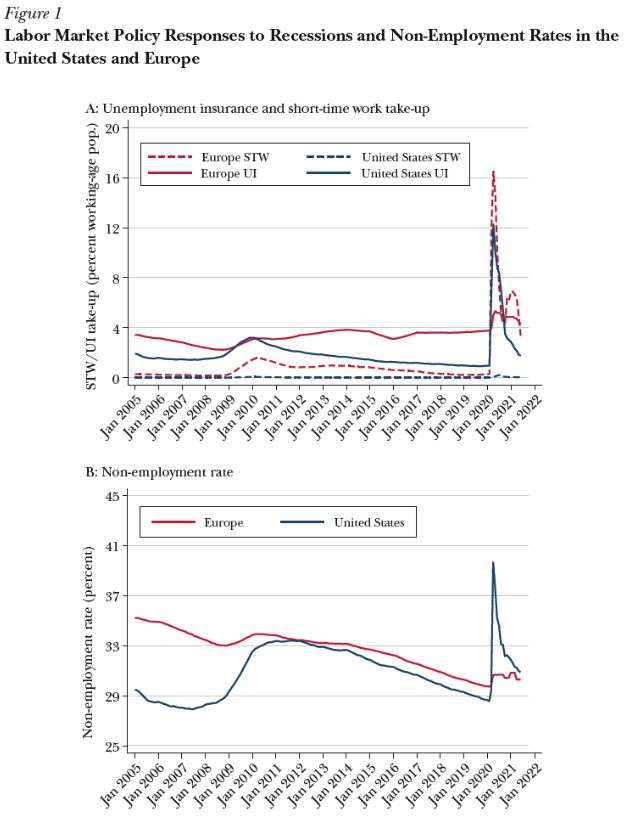Tuesday, July 12, 2022
Pandemic Policy: Support Jobs or Workers?
From Conversable Economist:
“The pandemic recession from March to April 2020 was a different creature from the previous post World-War II recessions: different in cause, length, depth, and the kinds of social and economic changes that happened. The appropriate economic policy response was also different. Instead of the standard anti-recession policy of stimulating the entire economy, it is more useful to think of pandemic recession policy as a form of social insurance. One key question is whether this social insurance should operated primarily by supporting the unemployed or by supporting jobs.
Lest this distinction sound like a word game, consider this real world difference. In the pandemic, most European countries responded with programs of “short-time work.” The idea the employer doesn’t need to fire or lay-off workers. Instead, it cuts their hours substantially, and the government makes up the difference. It’s a kind of partial unemployment, except that when the worst of short, sharp pandemic hit to the economy passed by, the workers were still employed at their previous jobs and employers could ramp up their hours again. In contrast, the US approach emphasized larger and longer unemployment payment aimed at those who were without jobs. US employers (with the exception of some small state-level programs) did not have option of switching to short-time work.
Giulia Giupponi, Camille Landais, and Alice Lapeyre discuss the tradeoffs between tehse two approaches in “Should We Insure Workers or Jobs during Recessions?” (Spring 2022, Journal of Economic Perspectives, 36:2, 29-54). Here’s one of their figures. The solid lines show the share of population receiving unemployment insurance, with the blue line showing the US and the red line showing a weighted average for Germany, France, Italy, and the United Kingdom. Notice that the share of workers getting unemployment insurance in the pandemic spikes up in the US (solid blue line) but barely budges in the European countries (solid red line). Conversely, the share of workers on short-time work spikes up in the European countries (dashed red line) but barely budgets in the US (dashed blue line).”

Posted by at 7:39 AM
Labels: Inclusive Growth, Macro Demystified
Subscribe to: Posts